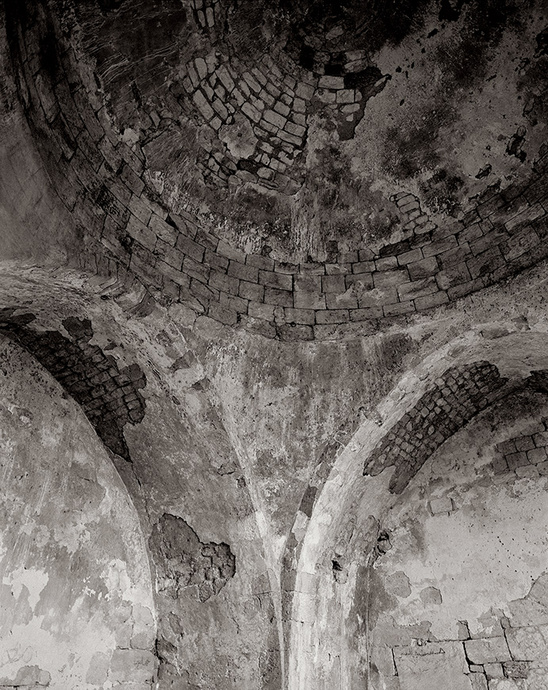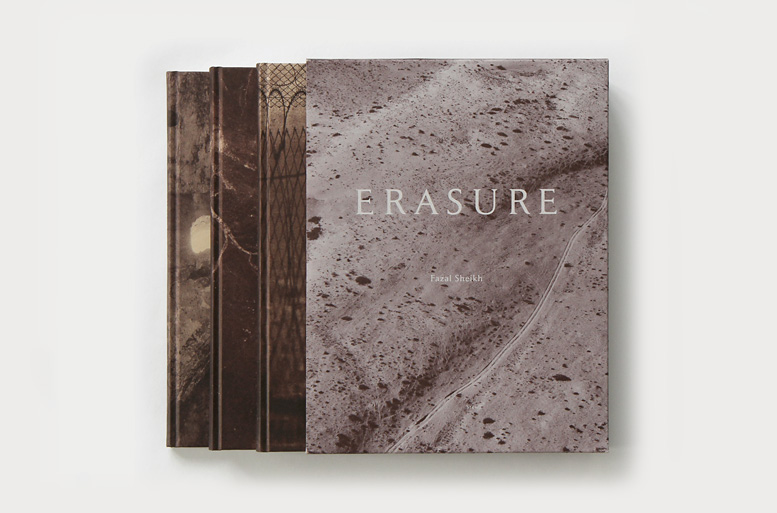The Erasure Trilogy

The Erasure Trilogy brings together three projects which explore loss, displacement, and division among those whose lives have been irrevocably changed by the establishment of the State of Israel in 1948 and by the Palestinian–Israeli conflict that is its legacy.
Memory Trace, the first project in the trilogy, records what remains of some of the former Palestinian villages that were destroyed and depopulated by Israeli troops during the 1948 Arab–Israel war and its aftermath. The desolation of these ruined settlements, some barely more than piles of stones in the surrounding countryside, is paralleled by the portraits and testimonies of ageing Palestinians, who were driven out of their homes by the fighting and have lived within refugee communities in Israel ever since. The past survives in their memories overlaid by anguish and the pain of loss
In Desert Bloom, the second project in the trilogy, Sheikh’s aerial photographs reveal the ironic consequences of Israeli Prime Minister David Ben-Gurion’s dream of settling the Negev and making the “desert bloom.” They show the extreme transformation of the landscape caused by mining, the construction of military training camps, the demolition of villages and afforestation and register the myriad actions that have displaced the Palestinian Bedouins who have lived in the desert for generations Through Sheikh’s lens the desert becomes both an archive of violence and a record of human attempts to erase it. The essential texts accompanying Desert Bloom explore the historical and contemporary clues along the shifting surface of the desert, revealing what lies concealed within it.
Independence/Nakba, the final project in the trilogy, consists of sixty-five portrait diptychs pairing people from both sides of the Israeli-Palestinian conflict, tracing the generations back from 2013 to the pivotal year of 1948. Each portrait depicts someone who lived in Palestine before the founding of Israeli state in 1948, or whose ancestors did. These double portraits inspire questions about the relations between Israelis and Palestinians before the founding of the State of Israel and lead us to consider the background to the conflict which continues to the present day.
The Erasure Trilogy originated as part of This Place, a project initiated by the French photographer Frédéric Brenner, which invited twelve international artists using photography to consider the contemporary situation in Israel and the West Bank.

Publication
Steidl
With text by Fazal Sheikh
Design: Fazal Sheikh with Duncan Whyte/Steidl Design
438 pages, color, tri-tone images
8.1 x 10.6 in / 20.6 x 27 cm
Number of items: 4
Monochrome printed paperbound hardcover volumes housed in a slipcase
Volume 1: Memory Trace, 104 pages, 48 black and white photographs
Volume 2: Desert Bloom, 166 pages, 83 color photographs
Volume 3: Desert Bloom Notes, 32 pages, 85 color photographs
Volume 4: Independence/Nakba, 144 pages, 130 black and white photographs
Tritone and four-color process
ISBN 978-3-86930-805-0
Publication date: 1st Edition August 2015